Equipment
Ping G30 Drivers, Fairway Woods, Hybrids and Irons
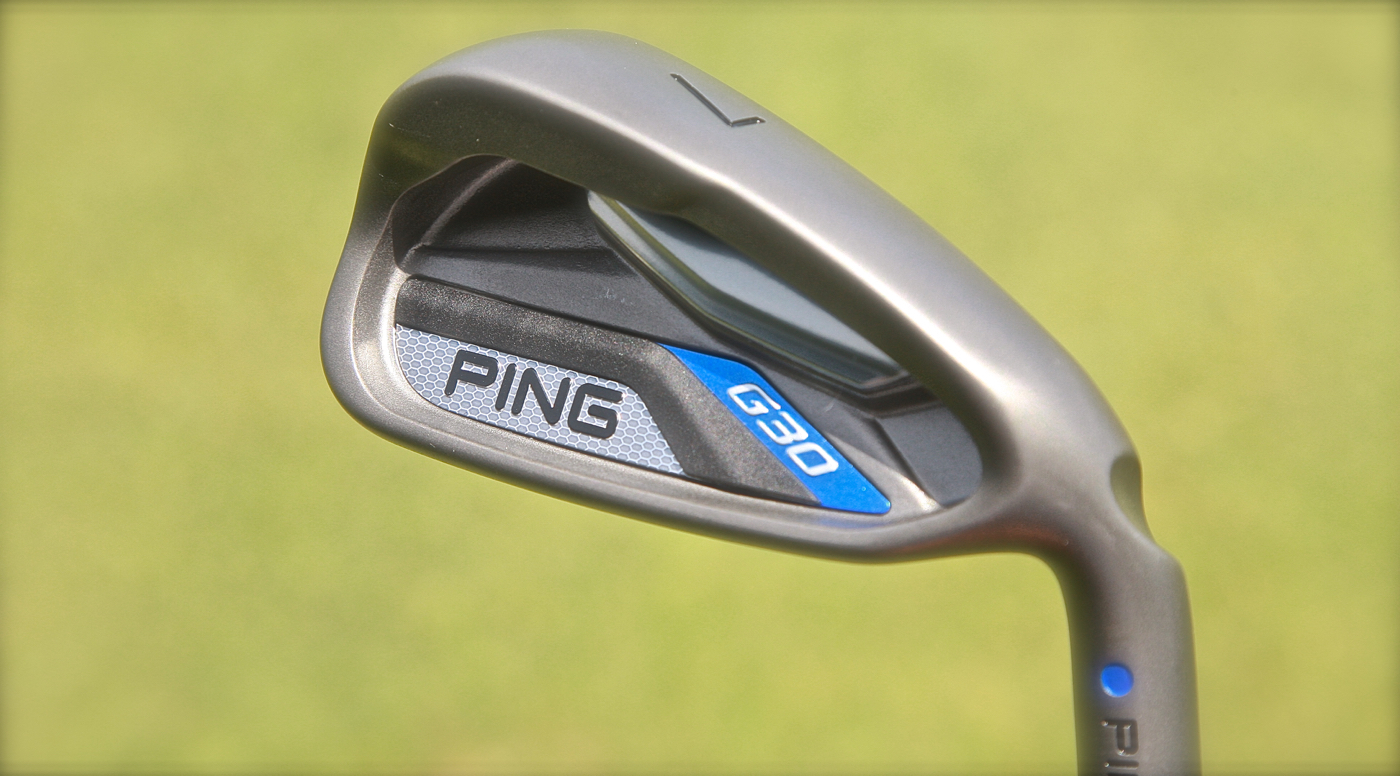
G30 Drivers
No matter where a golf equipment manufacturer places the center of gravity in its latest driver, one thing is true; modern driver heads aren’t very aerodynamic objects. Ping’s new G30 driver doesn’t change that, but the company’s engineers found a way to improve its aerodynamics without compromising the framework that has made Ping’s line of G-Series drivers some of the best performers in the industry.
The improved aerodynamics come in the way of turbulators, which are six ridges on the front of the G30’s crown that reduce drag forces. According to Ping, the turbulators helped Bubba Watson increase his driver club head speed 2 mph, which lead to 7 to 10 yards of extra driving distance.
Click here to see photos of Bubba Watson’s pink G30 driver.
“What turbulators do is give you a little bit of turbulence that makes the air stick to the surface,” said Marty Jertson, Ping’s director of product development. “Air sticking to the surface is a good thing … The air already sticks to the surface of the sole of a driver pretty well, so we don’t need turbulators there.”
Click here to read our full review of the Ping G30 driver.
Golfers who swing faster create more drag forces, so they’ll gain more club head speed from the turbulators than average golfers, who can expect gains of about 0.7 mph according to an internal Ping study. All things being equal, that equates to about 2-to-3 yards of more distance than Ping’s G25 driver. All things aren’t equal between the G25 and the G30, however, which is why golfers might be able to hit the company’s new driver a little more than 2 or 3 yards farther than the G25.
The G30 uses a new T9S titanium face, which is thinner, stronger and lighter than the company’s previous driver faces. The new material saves 4 grams of weight from the driver’s construction, which was redistributed low and rearward in the driver head to boost the G30’s moment of inertia (MOI), a measure of a club’s retention of ball speed on off-center hits. Its MOI is even higher than that of the G25, which was already the highest MOI driver on the market. The lower, more rearward center of gravity (CG) also makes the G30 about 150 rpm lower spinning than the G25 driver, according to Ping.
Moving the weight lower and more rearward has another advantage, Jertson said. The position of the weight helps the driver head swing more upward heading into impact, something that’s known as “increasing dynamic loft.” That helps golfers launch the G30 driver higher, creating more of the high-launch, low-spin conditions that can lead to more distance.
The G30 will also be available in Ping’s SF Tec model, which stands for “Straight Flight Technology.” The G30 SF Tec drivers are nearly identical to the standard models except that their face angles sit more closed at address and they have CG’s that are shifted slightly toward the heel. That helps golfers who tend to fade or slice the ball to more easily square the clubface at impact. The SF Tec driver heads are also 3 grams lighter (203 grams instead of 206 grams). Those combined changes can increase driving distance as much as 12 yards, the company claims.
The G30 drivers are available in lofts of 9, 10.5 and 12 degrees, and have a new adjustable hosel that’s the same weight and diameter as Ping’s fixed hosels. The drivers can be adjusted as much as 1-degree up or down from the driver’s printed loft and allows golfers to adjust loft incrementally as well: 0.6-degrees higher or lower from the printed loft. The stock swing weight is D3.
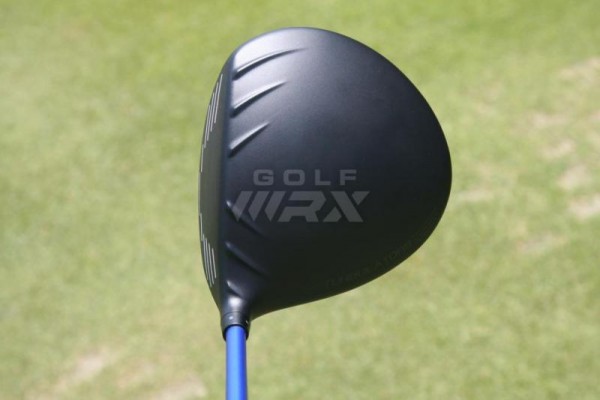
Since Ping’s new adjustable hosel screw is slightly larger, shafts fit with the company’s G25 adjustable hosel sleeves will not fit in G30 drivers or fairway woods.
The G30 SF Tec drivers are available in lofts of 10 and 12 degrees. They have the same adjustable hosel as the G30 and have stock swing weight of D1.
The G30 and G30 SF Tec drivers come stock with the company’s new TFC 419D shafts, which are counterbalanced and have a stock length of 45.75 inches. They’re available in the following flexes: Soft R (53 grams), Regular (55 grams), Stiff (59 grams) and X-Stiff (63 grams).
Both the G30 and G30 SF Tec drivers carry an MSRP of $385 and are currently available for pre-order. They’ll hit stores along with the G30 fairway woods, hybrids and irons in late July.
New Ping Tour shafts
Golfers who prefer shafts that are a little shorter, heavier, stiffer and have less torque can also opt for the company’s new “Tour” shafts, which have a slightly lower balance point that creates the same D3 swing weight while being 0.5 inches shorter (45.25 inches). They also launch a little lower than the TFC 419D shafts.
The Tour shafts are not exclusive to the G30 launch, which means they’re available for all current Ping metal woods in Tour 65 and Tour 80 models, as well as a Tour 90 shaft that’s designed for hybrids.
G30 Fairway Woods
Like Ping’s G30 drivers, the G30 fairway woods have turbulators on their crown to help boost clubhead speeds through improved aerodynamics. That will lead to some distance gains, but won’t have nearly the impact on their performance as their new carpenter 475 steel faces, which are 44 percent stronger than the 17-4 steel faces used on the G25 fairway woods.
According to Jertson, the thinner, stronger faces will give the G30 fairway woods approximately 1.5-to-2 mph more ball speed than the G25 models, which along with other changes make the G30’s much more of a distance threat than their predecessors.
At address, golfers might notice that Ping made the heel height of the G30 fairway woods a bit taller, creating a little more surface area that causes the face to flex more at impact.
The new faces and improved manufacturing techniques also freed up more discretionary weight for Ping to move the CG of the G30 3 wood (14.5 degrees, 167 cubic centimeters) lower and more rearward like the G30 driver to raise its launch, lower its spin and increase forgiveness. The higher-lofted G30 5 wood (18 degrees, 151cc) and 7 wood (21 degrees, 145cc) have CG’s that are moved slightly forward to help lower their spin, which creates a more penetrating trajectory that’s less likely to “balloon.”
For the first time in a G-Series fairway wood, Ping has also made the G30’s adjustable. They use the same adjustable hosel as the G30 driver, giving them a 2-degree range of adjustability.
The G30 fairway woods come stock with Ping’s TFC 419F shaft in Soft R (63 grams), R (64 grams), S (68 grams) and X (69 grams) flexes and carry an MSRP of $275. Stock swing weight is D1.
G30 Hybrids
The G30 hybrids use a new heat-treated 17-4 stainless steel face that improves strength by 19 percent, boosting the CT of the hybrids by 20 points. That will give them a little more ball speed than the G25 hybrids, and with their similar trajectory that means they’ll likely carry a few yards farther for most golfers.
There’s no turbulators due to their smaller, more aerodynamic size, but the shape of the hybrids was tweaked to include a flatter top rail and a higher heel section that gives them a more square appearance at address.
The G30 hybrids are available in lofts of 17, 19, 22, 26 and 30 degrees and use progressive CG locations that are low and rearward in the 17- and 19-degree hybrids for maximum forgiveness and peak height, and more forward in the 22-, 26- and 30-degree hybrids to create a flatter trajectory.
They come stock with Ping’s TFC 419H shaft in Soft R, R, S and X flexes and carry an MSRP of $242.50. Stock swing weight is D1.
Click here to see what GolfWRX members are saying about the G30 hybrids in our forum.
G30 Irons
Ping’s G30 irons have thinner faces than the company’s uber-forgiving G25 irons, but their design doesn’t follow the industry trend of making thinner, unsupported faces to create more ball speed and more distance.
“The faces are not unsupported,” Jertson said. “We want to be able to control the [flexing of our iron faces] to give our irons more consistency.”
With Ping irons, there’s almost always an effort to reposition as much weight around the perimeter of the iron as possible to create more forgiveness and the G30 irons are no exception. But first things first, Ping engineers wanted the G30 irons to fly a little farther, which isn’t an easy thing to do when the iron faces can’t be made to flex more. The company achieved its goal by giving the irons slightly longer shafts to help golfers create more clubhead speed and a higher launch angle. The longer shafts, along with the slightly stronger lofts, also provide better gapping throughout the set.
Sound like a simple fix? It is until you consider this: when you make a club longer and don’t want to increase its swing weight, you have to remove weight from the club head. And since Ping engineers didn’t want to make the G30 irons less forgiving than the G25’s, they had to do more with less and needed to execute several different design plans to accomplish their goals.
They started with slightly longer blade lengths, which are most noticeable in the 4-iron through 7-iron clubs. That gave the engineers a larger canvas that made it easier to redistribute weight around the perimeter of the irons. The G30’s were also designed with a deeper undercut that lowers their CG to boost the their MOI, which helps iron shots that are hit off-center fly closer to the distance of shots hit in the center of the face. The soles of the G30 irons are wider as well, which moved the CG of the irons a little lower and deeper to further boost MOI. The soles have their extra width positioned on the club’s trailing edge, where it is not really a factor in turf interaction.
Add up those changes and the G30’s not only fly higher than the G25 irons, but the 4 iron is about 7 yards longer, according to Ping estimates, and the 7 iron is about 3 yards longer. The MOI of the irons is also 2 percent greater from heel-to-toe and 1 percent from top-to-bottom despite the lighter head weights.
Visually, the G30 irons have less offset than the G25 irons, a change that is most noticeable from the 6 iron down. There’s also a softer elastomer badging that helps improve the feel of the irons.
The G30 irons are available in 4-PW, UW, SW and LW and have the same lofts and shaft lengths as the company’s Karsten irons. The 4 iron’s stock loft is 21 degrees, the 6 iron is 27 degrees and the PW is 45 degrees. They carry an MSRP of $110 per club with the company’s stock CFS Distance steel shafts (Soft R, R, S, X flexes) and $125 per club TFC 419i graphite shafts (Soft R, R and S flexes).
Click here to see what GolfWRX members are saying about Ping’s G30 irons in our forum.
- LIKE46
- LEGIT5
- WOW11
- LOL1
- IDHT0
- FLOP0
- OB0
- SHANK11
Whats in the Bag
WITB Time Machine: Danny Willett’s winning WITB, 2016 Masters
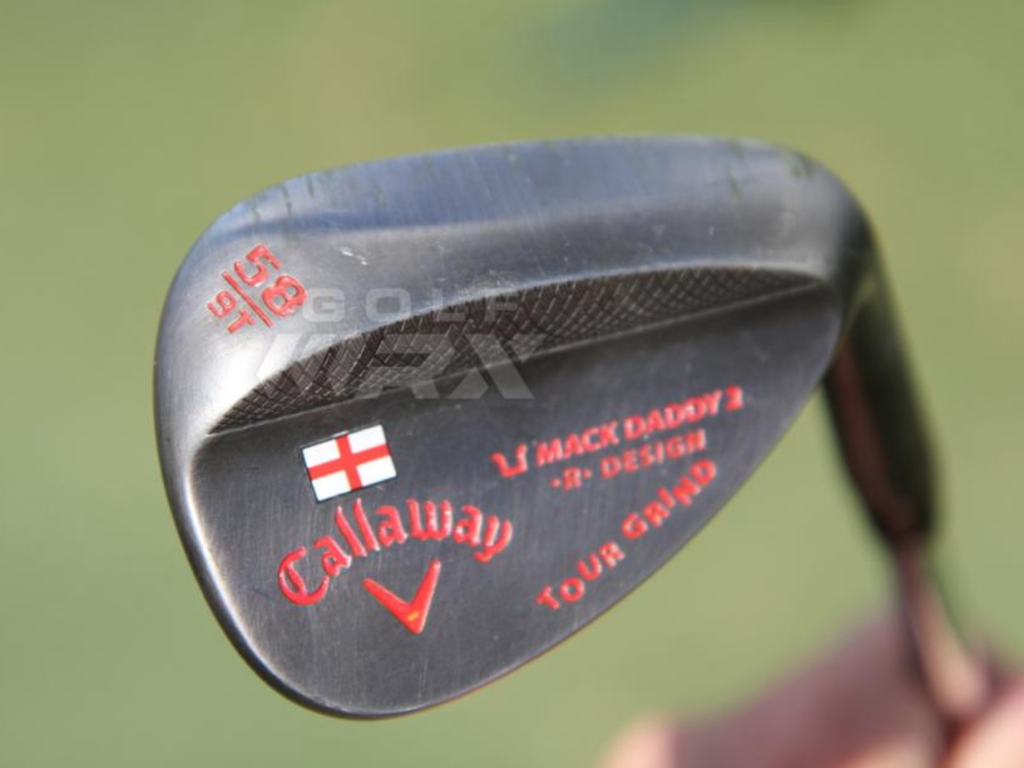
Driver: Callaway XR 16 (9 degrees)
Shaft: Mitsubishi Rayon Diamana W-Series 60 X
Length: 45.5 inches
3-wood: Callaway XR 16 (15 degrees)
Shaft: Mitsubishi Rayon Diamana W-Series 70X
5-wood: Callaway XR 16 (19 degrees)
Shaft: Mitsubishi Rayon Diamana W-Series 80X
Irons: Callaway Apex UT (2, 4), Callaway Apex Pro (5-9)
Shaft: True Temper Dynamic Gold X100 Superlite
Wedges: Callaway Mack Daddy 2 (47-11 S-Grind) Callaway Mack Daddy 2 Tour Grind (54-11, 58-9)
Shaft: True Temper Dynamic Gold X100 Superlite
Putter: Odyssey Versa #1 Wide (WBW)
Lie angle: 71 degrees
Ball: Callaway Speed Regime SR-3
Check out more photos of Willett’s equipment from 2016 here.
- LIKE2
- LEGIT0
- WOW1
- LOL0
- IDHT0
- FLOP0
- OB0
- SHANK0
Equipment
Project X Denali Blue, Black shaft Review – Club Junkie Review
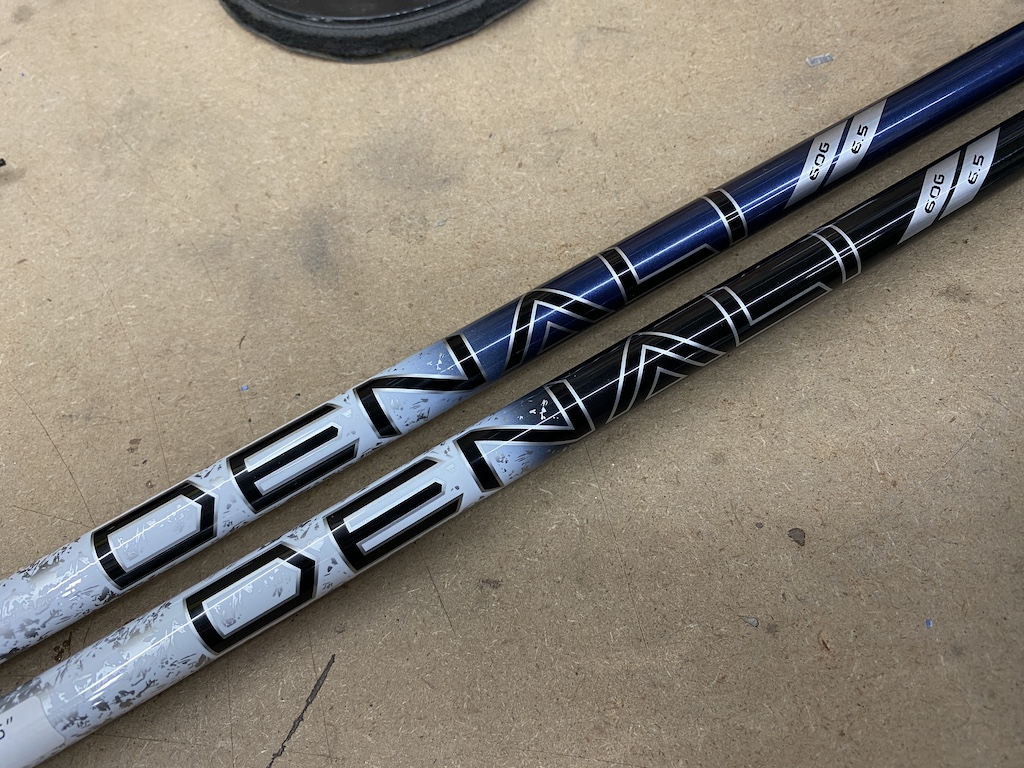
Originally, Project X was known for low-spin steel iron shafts. However, the company might now be known for wood shafts. Denali is the newest line of graphite shafts from Project X. With the Denali line, the company focuses on feel as well as performance.
There are two profiles in the Denali line, Blue and Black, to fit different launch windows. Denali Blue is the mid-launch and mid-spin profile for players who are looking for a little added launch and Denali Black is designed for low-launch and low-spin. Both models are going to offer you a smooth feel and accuracy.
For a full in-depth review check out the Club Junkie podcast on all podcast streaming platforms and on YouTube.
Project X Denali Blue
I typically fit better into mid-launch shafts, as I don’t hit a very high ball so the Denali Blue was the model I was more excited to try. Out of the box, the shaft looks great and from a distance, it is almost hard to tell the dark blue from the Denali Black. With a logo down install of the shaft, you don’t have anything to distract your eyes, just a clean look with the transition from the white and silver handle section to the dark navy mid and tip.
Out on the course, the Blue offers a very smooth feel that gives you a good kick at impact. The shaft loads easily and you can feel the slightly softer handle section compared to the HZRDUS lineup. This gives the shaft a really good feel of it loading on the transition to the downswing, and as your hands get to impact, the Denali Blue keeps going for a nice, strong kick.
Denali Blue is easy to square up at impact and even turn over to hit it straight or just little draws and most of the flex of the shaft feels like it happens right around where the paint changes from silver to blue. The Blue launches easily and produces what I consider a true mid-flight with the driver. While it is listed as mid-spin, I never noticed any type of rise in my drives. Drives that I didn’t hit perfectly were met with good stability and a ball that stayed online well.
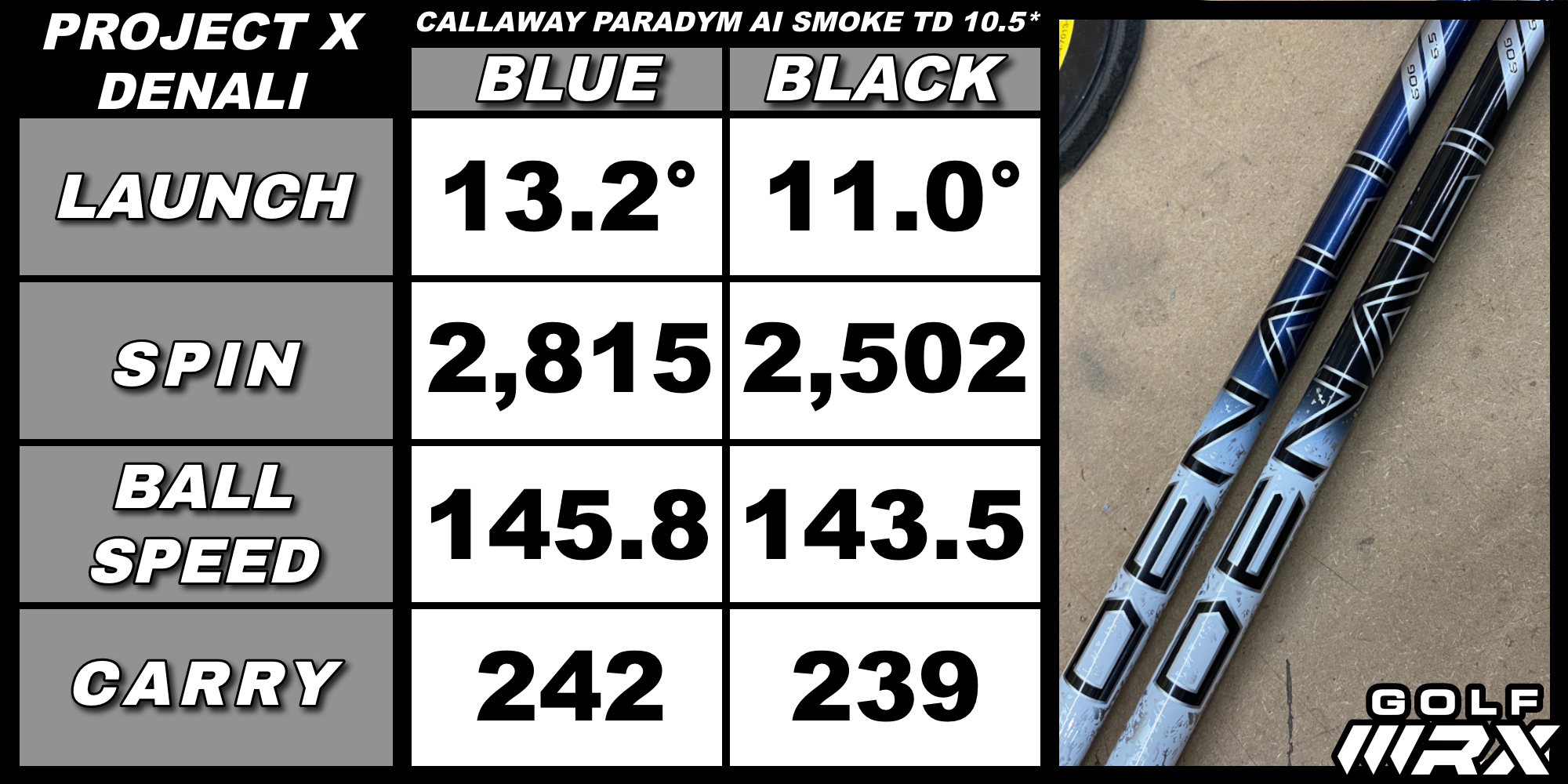
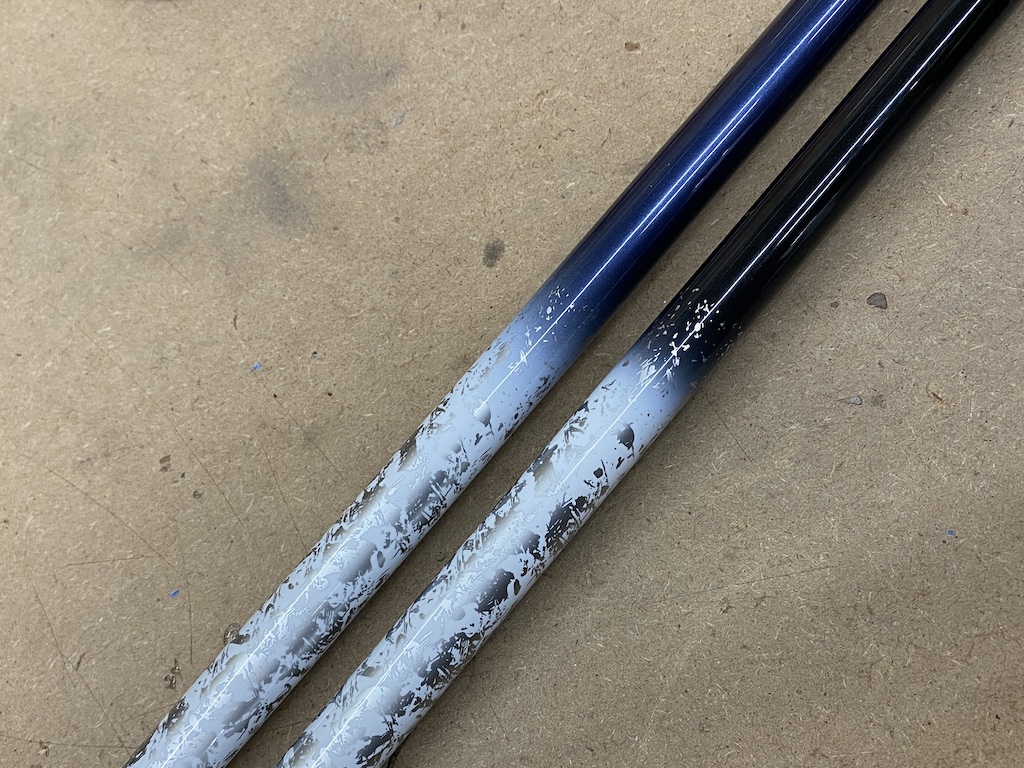
Project X Denali Black
When you hold the Denali Black in your hands you can tell it is a more stout shaft compared to its Blue sibling by just trying to bend it. While the handle feels close to the Blue in terms of stiffness, you can tell the tip is much stiffer when you swing it.
Denali Black definitely takes a little more power to load it but the shaft is still smooth and doesn’t give you any harsh vibrations. Where the Blue kicks hard at impact, the Black holds on a little and feels like keeps you in control even on swings that you try and put a little extra effort into. The stiff tip section also makes it a little harder to square up at impact and for some players could take away a little of the draw from their shot.
Launch is lower and more penetrating compared to the Blue and produces a boring, flat trajectory. Shots into the wind don’t rise or spin up, proving that the spin stays down. Like its mid-launch sibling, the Black is very stable and mishits and keeps the ball on a straighter line. Shots low off the face don’t get very high up in the air, but the low spin properties get the ball out there farther than you would expect. For being such a stout shaft, the feel is very good, and the Denali Black does keep harsh vibrations from your hands.
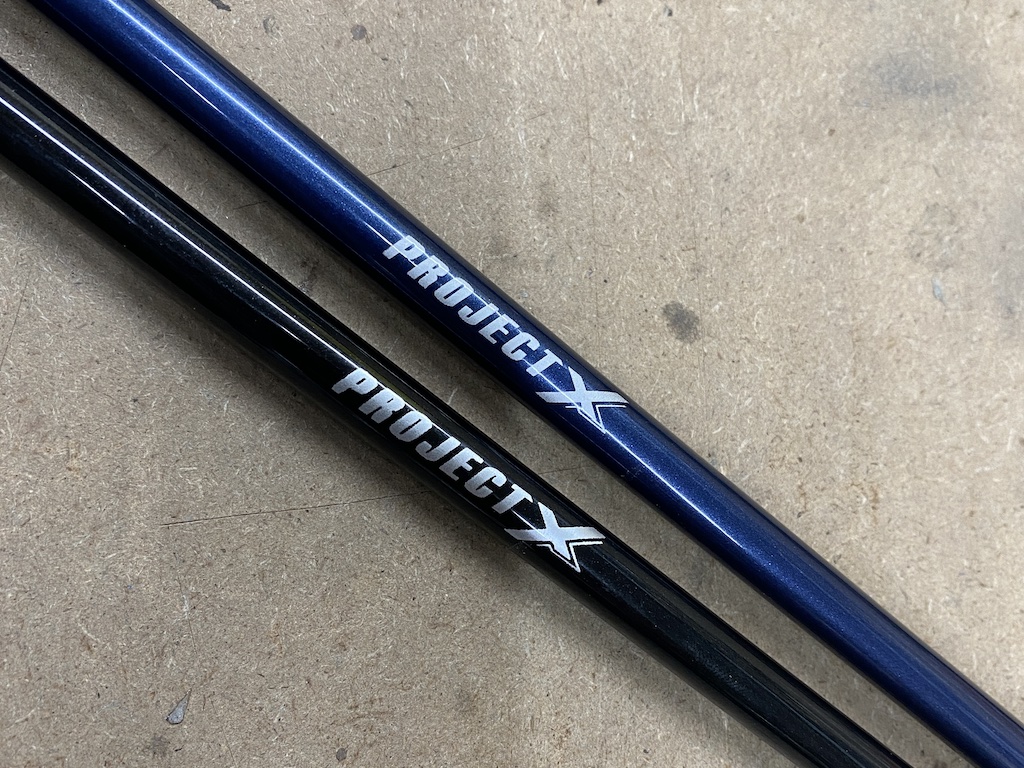
Overall the Project X Denali Blue and Black are great additions to the line of popular wood shafts. If you are looking for good feel and solid performance the Denali line is worth trying out with your swing. Choose Blue for mid-launch and mid-spin or Black for lower launch and low spin.
- LIKE2
- LEGIT1
- WOW1
- LOL0
- IDHT0
- FLOP0
- OB0
- SHANK0
Equipment
What we know about Bryson DeChambeau’s 3D-printed Avoda irons
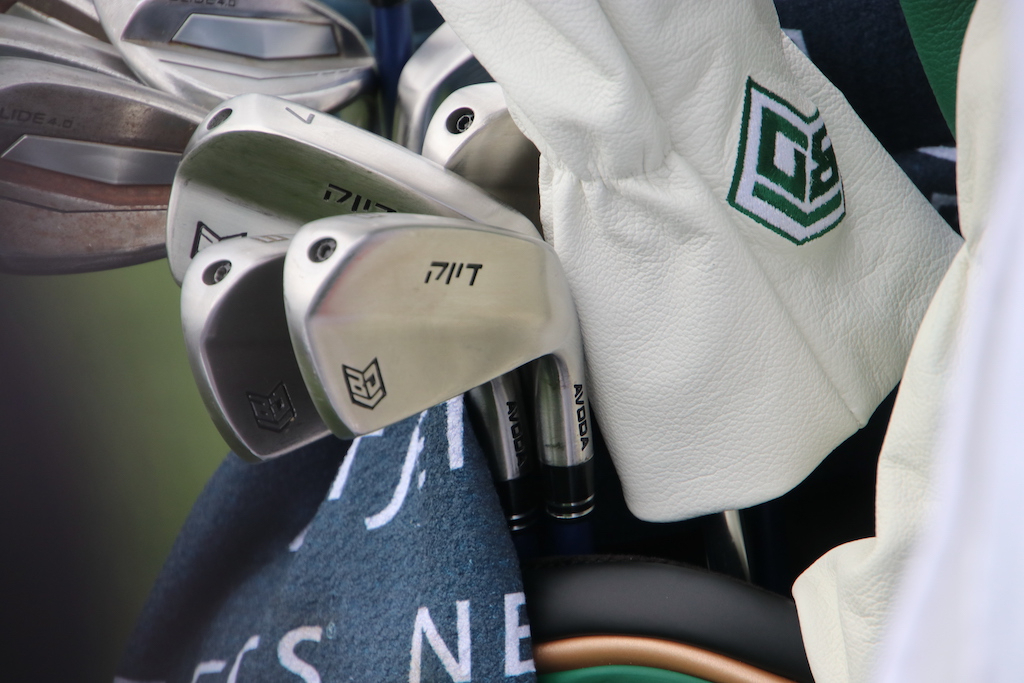
Bryson DeChambeau fired an opening-round 7-under 65 at Augusta National, hitting an impressive 15 of 18 greens in regulation in the process. Golf’s mad scientist’s play grabbed headlines and so too did his equipment. In place of the Ping i230 irons he had in the bag last week for LIV Golf’s Miami event, DeChambeau is gaming a prototype 5-PW set of irons from little-known direct-to-consumer manufacturer Avoda.
What is Avoda Golf?
Founded by Tom Bailey, also a Mike Schy student like Bryson DeChambeau, Avoda Golf is a direct-to-consumer golf equipment company that currently manufactures both single and variable-length irons in one model that are available for pre-order.
What irons is Bryson DeChambeau playing?
Per multiple reports, DeChambeau is playing a custom-designed set of single-length irons that incorporate bulge and roll into the face design. The two-piece 3D-printed irons were reportedly only approved for play by the USGA this week, according to Golfweek’s Adam Schupak.
Regarding the irons, DeChambeau told Golf Channel the irons’ performance on mishits was the determining factor in putting them in play this week. “When I mishit on the toe or the heel,” DeChambeau said. “It seems to fly a lot straighter for me and that’s what has allowed me to be more comfortable over the ball.”
What can we tell about the design of the clubs?
These days, it is a little hard to speculate on what is under the hood with so many hollow body irons. DeChambeau’s irons look to be hollow on the lower section as they do flare back a decent amount. That “muscle” on the back also looks to be fairly low on the iron head, but we can assume that is progressive through the set, moving up higher in the short irons.
A screw out on the toe is probably used to seal up the hollow cavity and used as a weight to dial in the swing weight of the club. From pictures, it is hard to tell but the sole looks to have a little curve from heel to toe while also having some sharper angles on them. A more boxy and sharper toe section looks to be the design that suits Bryson’s eye based on the irons he has gravitated toward recently.
What are bulge and roll, again?
Two types of curvature in a club face, traditionally incorporated only in wood design. Bulge is heel-toe curvature. Roll is crown-sole curvature. Both design elements are designed to mitigate gear effect on off-center strikes and produce shots that finish closer to the intended target line. (GolfTec has an excellent overview of bulge and roll with some handy GIFs for the visual learner)
What else is in DeChambeau’s bag?
Accompanying his traditional Sik putter, Bryson builds his set with a Ping Glide 4.0 wedges, a Krank Formula Fire driver and 5-wood, and a TaylorMade BRNR Mini Driver, all with LA Golf graphite shafts.
- LIKE80
- LEGIT24
- WOW17
- LOL8
- IDHT5
- FLOP2
- OB5
- SHANK14
-

 19th Hole3 days ago
19th Hole3 days agoDave Portnoy places monstrous outright bet for the 2024 Masters
-

 19th Hole3 weeks ago
19th Hole3 weeks agoJohn Daly stuns fans into silence with brutal opening tee shot on PGA Tour Champions
-

 19th Hole2 weeks ago
19th Hole2 weeks agoThings got heated at the Houston Open between Tony Finau and Alejandro Tosti. Here’s why
-

 19th Hole4 days ago
19th Hole4 days agoTiger Woods arrives at 2024 Masters equipped with a putter that may surprise you
-

 19th Hole1 week ago
19th Hole1 week agoReport: Tiger Woods has ‘eliminated sex’ in preparation for the 2024 Masters
-

 19th Hole3 weeks ago
19th Hole3 weeks agoCharlie Woods finds it tough going on American Junior Golf Association debut
-

 19th Hole2 weeks ago
19th Hole2 weeks agoAddiction, spinal fusion, and scam artists – Everything Anthony Kim revealed in candid interview with David Feherty
-

 19th Hole1 week ago
19th Hole1 week agoAnthony Kim says doctors told him that he ‘may not have much time left’ ahead of LIV return

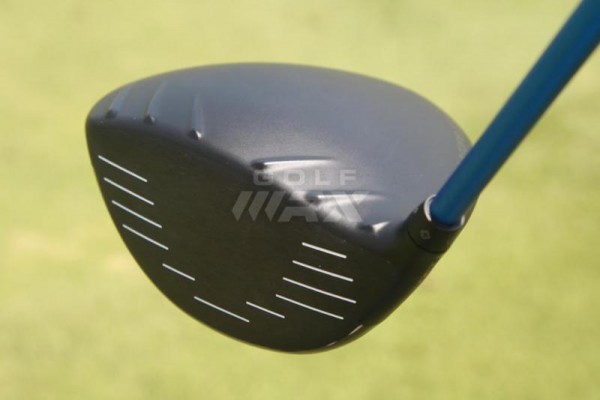
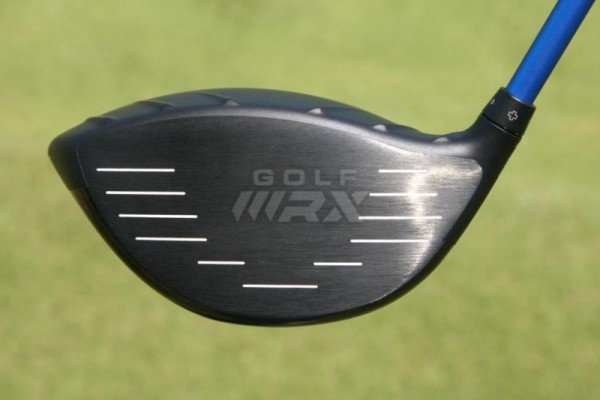
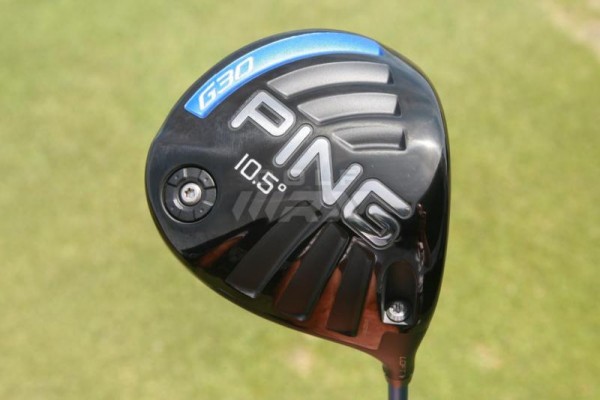
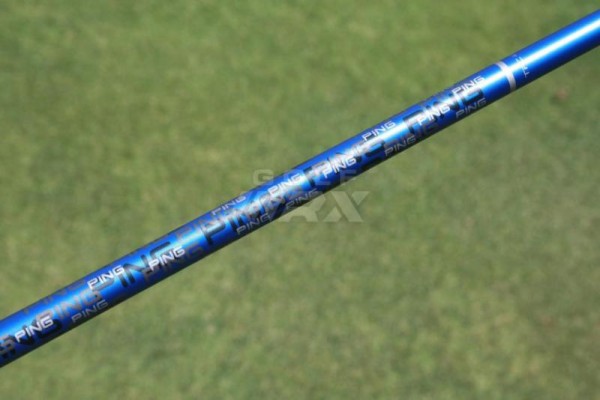
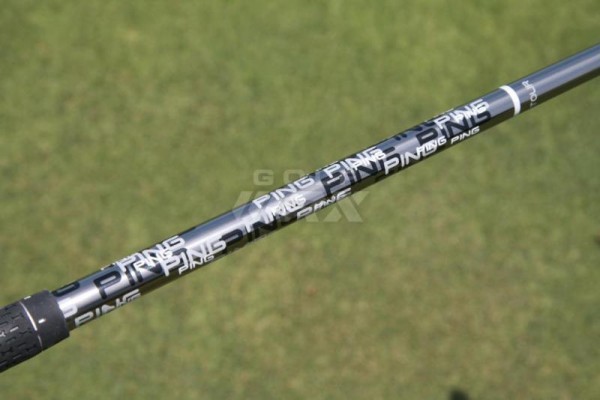
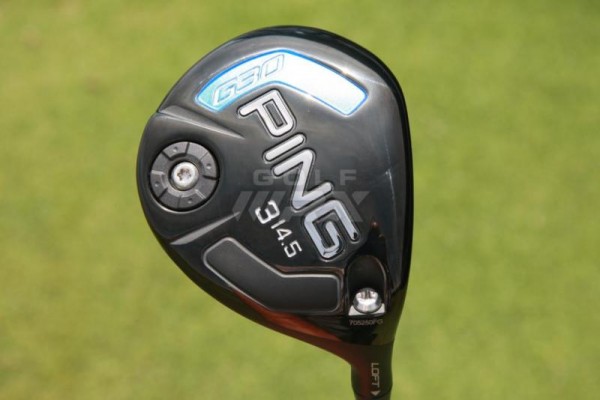
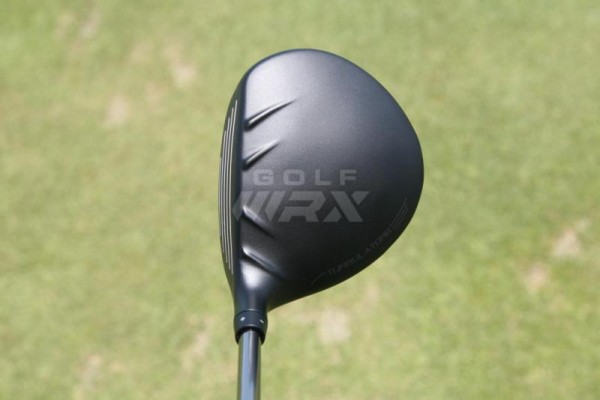
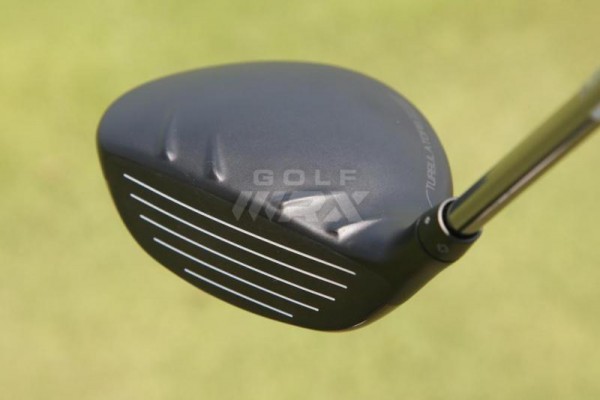
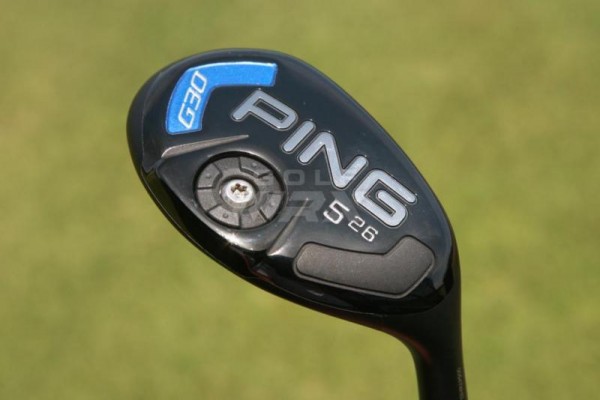
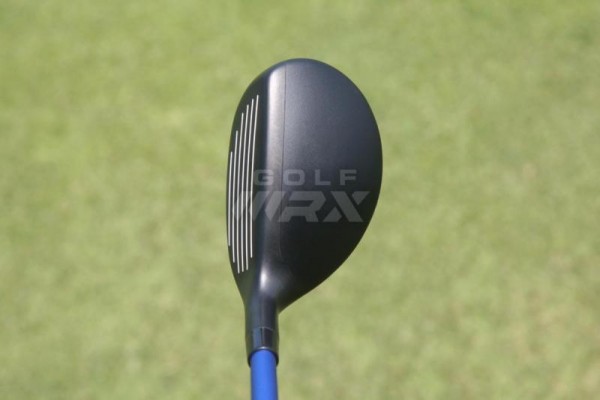
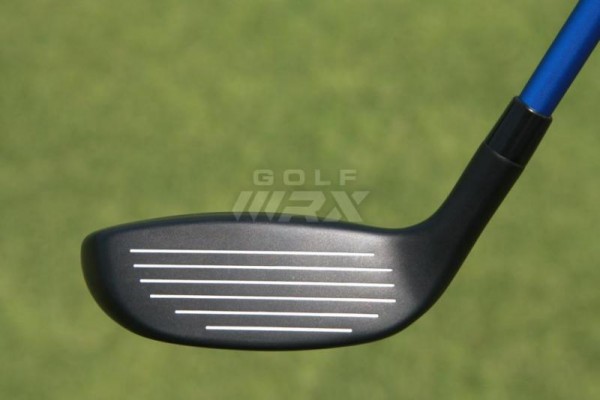
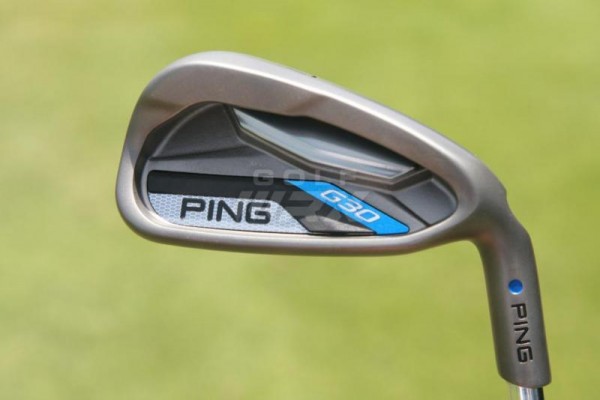
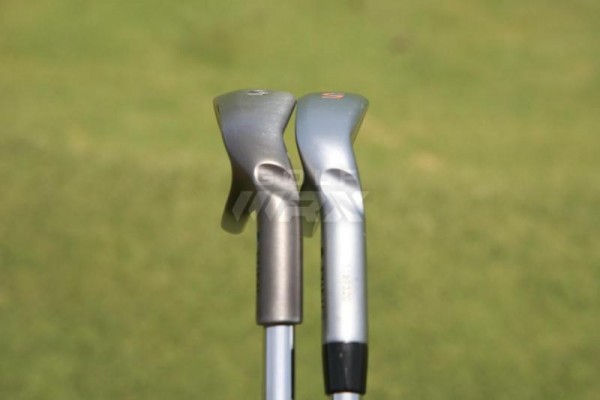
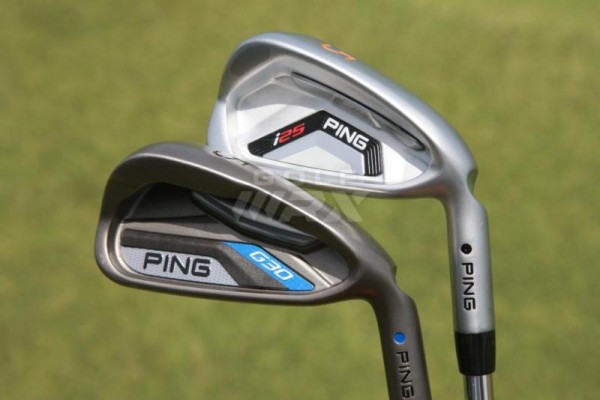
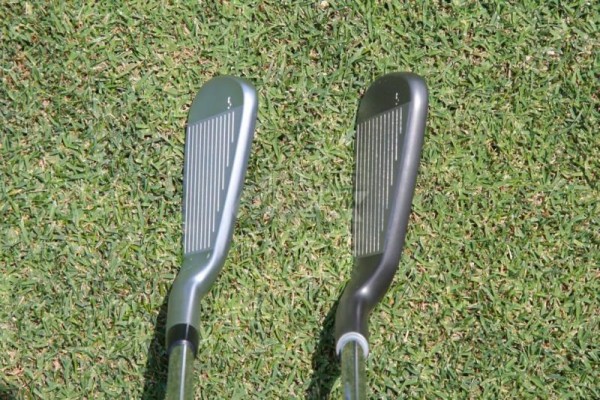
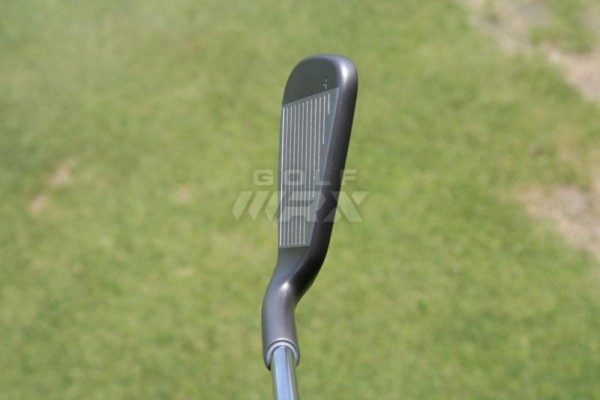
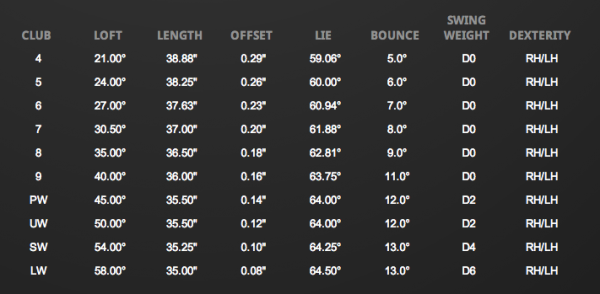


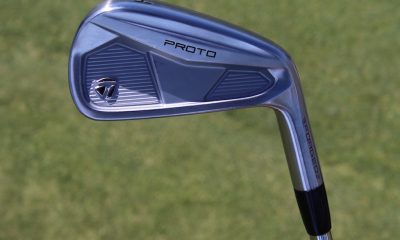

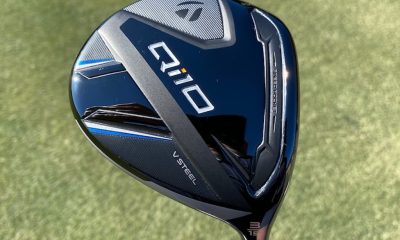

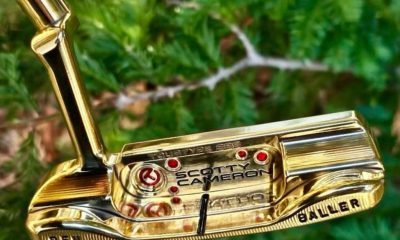

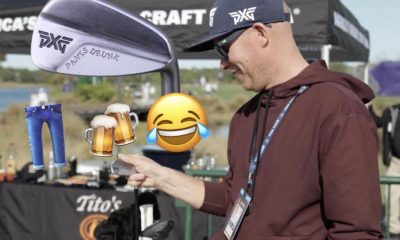

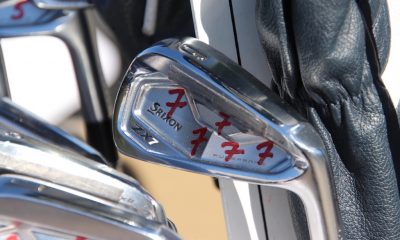



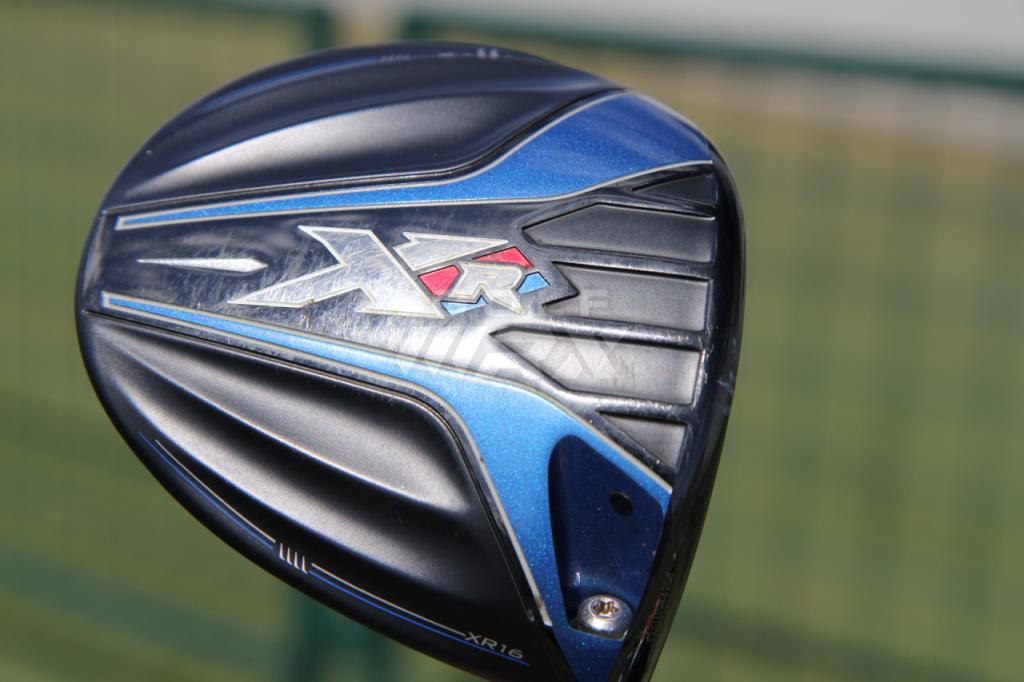
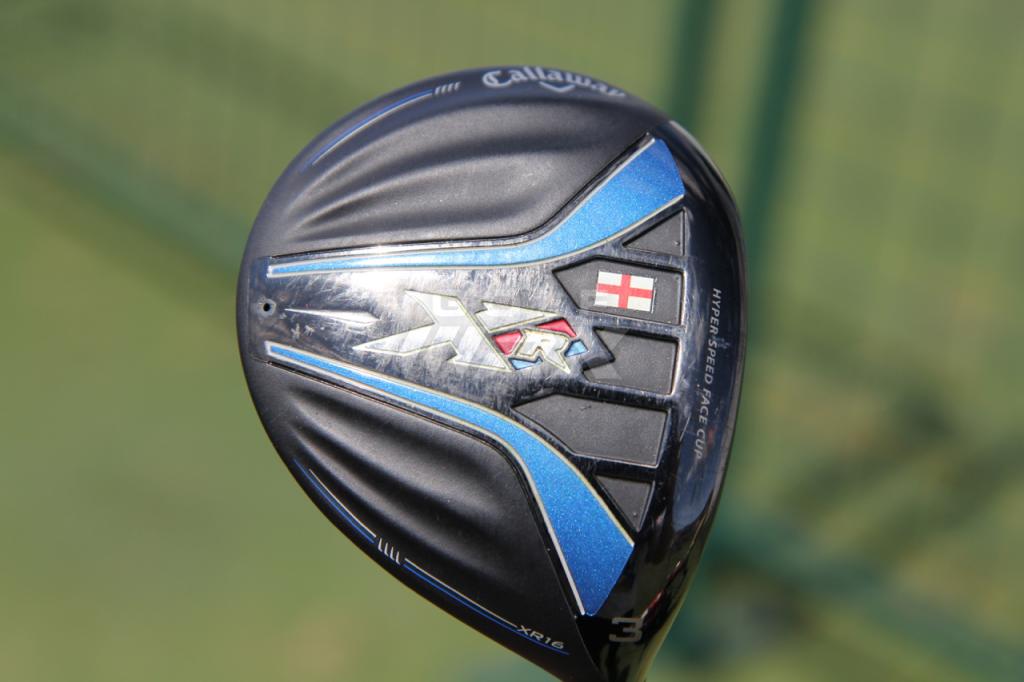

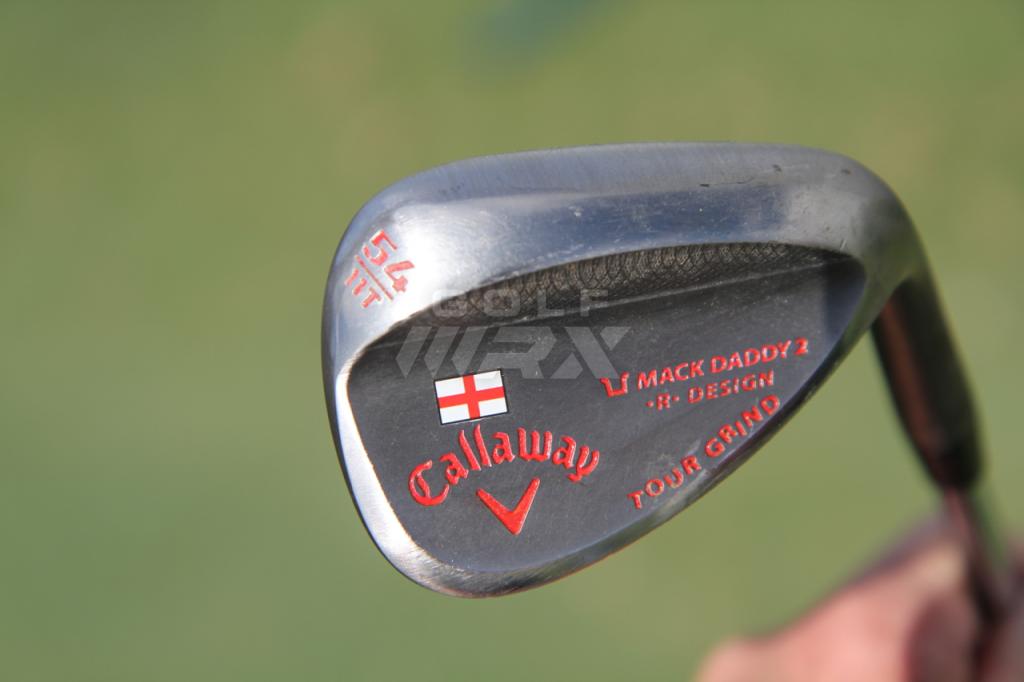
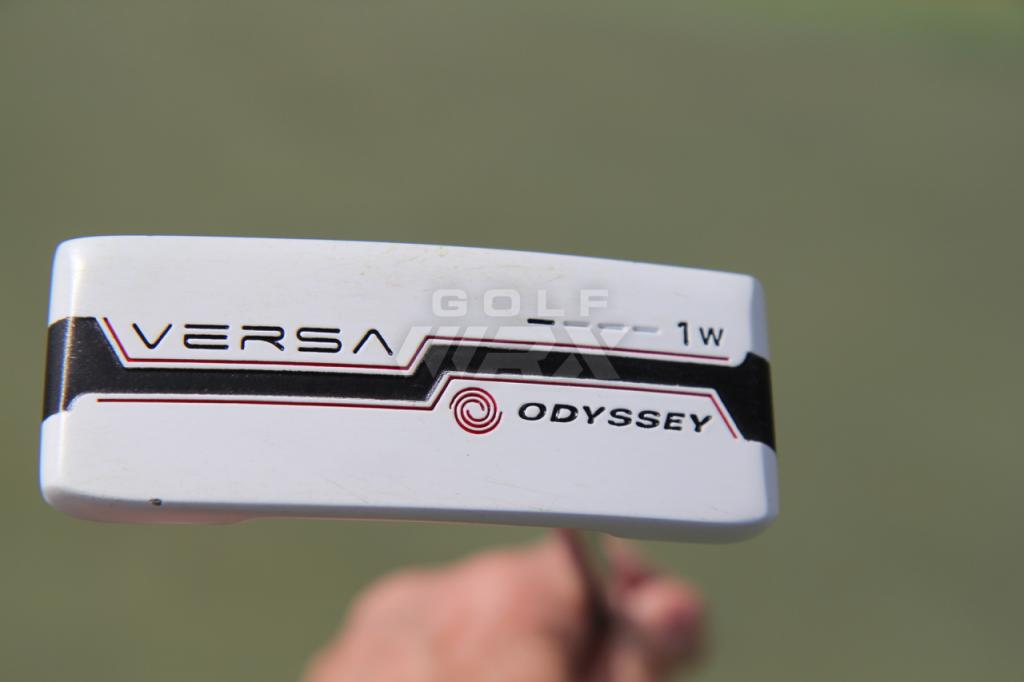














Pingback: 4 near-perfect golf gear launches – GolfWRX – aeropyme
Pingback: 4 near-perfect golf gear launches – GolfWRX – comnavimiyazaki
Pingback: 4 near-perfect golf gear launches – GolfWRX – comteichiku-shop
Pingback: 4 near-perfect golf gear launches – GolfWRX – comrenso-ruigo
Pingback: 4 near-perfect golf equipment launches – GolfWRX - Daily Sports News
Pingback: Justin Rose testuje nový prototyp putteru Axis1 – GolfWRX - Flores
Pingback: Justin Rose tests a new prototype of the Axis1 - GolfWRX - feeduz
Pingback: 4 near-perfect golf gear launches – GolfWRX – mtilending
Pingback: 4 near-perfect golf gear launches – GolfWRX – bactrimtabs
Pingback: 4 lanzamientos de equipos de golf casi perfectos: GolfWRX
Pingback: 4 near-perfect golf gear launches - GolfWRX - feeduz
Pingback: 4 uvedení tém?? dokonalého golfového vybavení – GolfWRX - Flores
Pingback: 4 near-perfect golf gear launches - GolfWRX -
Pingback: 4 near-perfect golf gear launches - GolfWRX -
Pingback: Justin Rose testing a new Axis1 prototype putter – GolfWRX - calamityskies.com
Pingback: Justin Rose testing a new Axis1 prototype putter - GolfWRX - TNSPILLS
Pingback: 4 near-perfect golf equipment launches – GolfWRX - calamityskies.com
Pingback: 4 near-perfect golf equipment launches – GolfWRX
long&left
May 8, 2015 at 12:50 am
always hated the look of the g30 woods with the fins – what a gimmick i thought….then i demoed the 3 wood today for a whole round…..whoaaaa give me that ugle stick anytime…
this thing is the dogs bol…..s…ridiculous long with great penetrating flight – even mishits are long especially near the bottom.
as easy hitting from the deck as the tee. little hard to shape though as its just wants to go straight…..hated it but now that i tried her, i have to have her….
cant wait to try the driver now…irons? nah cant cheat on my mizzy’s
MASSIVE MIKE!
Apr 10, 2015 at 11:37 am
I ordered a set with cushions. After 6 months I found that they never put in the cushions.
I ordered a wedge with a cushion. It came with no cushion and the wrong lie.
I sent the clubs back to get the cushion put in and all the cushion labels peeled off in 5 days.
I sent the clubs back for repair and they sent them back with the wrong grips
I WILL NEVER TRUST PING AGAIN AFTER 30+ YEARS—– WORST CUSTOMER SERVICE EVER!
THE SWEET THONG
Mar 21, 2015 at 9:57 pm
I have these with KBS TOUR V STIFF. This is the best iron I have ever hit. 2.5 Handicap w/ 30 years of playing. Wish they made a long iron like a 2 or 3 though.
Jeff
Mar 11, 2015 at 2:49 pm
I just got a G30 fairway wood. 14.5 3 wood and it’s hot and long. I like the turbulators. My auto correct does not. I like to look at them at address. There’s only 4 on the 3 wood crown and it kinda shows you, big hook, small hook, little slice, big slice.
Stuart
Aug 15, 2014 at 9:41 am
I have always disliked ping until today hit the 3 wood wow wee seriously long like 20 metres fly to my sldr
Tony
Aug 4, 2014 at 12:09 pm
Took the Tour shafted 80 XS 3 wood out for the first time Saturday.
Short par 5 495 yards, I hit 2 3 woods, fairway and on the green for easy bird.
Heavier shaft, shorter length has made the 3 wood a go to club once again!
Tyler Wainright
Jul 19, 2014 at 9:02 am
I just had my first Trackman fitting after not playing for 7+ years and the G30s, for me anyway, were spot on. I hit the 7 iron only. I haven’t kept up with all the gear changes over the years but the G30s with stock shafts felt amazing compared to my current set. Nice high ball flight and good carry too.
Martin
Jul 6, 2014 at 5:22 pm
I would like to see pics of the irons next to the G25 rather than the I25.
Makes them look chunkier than they probably are.
Joe Golfer
Jul 13, 2014 at 1:50 am
Couldn’t agree with you more, Martin.
Let’s compare apples to apples instead of apples to oranges.
Rich
Jul 4, 2014 at 11:02 pm
I like the set up of the irons. It covers roughly a normal 3-PW loft range with 7 clubs instead of 8. That’s a bonus if you ask me. Now I can carry an extra long club or wedge with only a minor change in gapping between clubs. Bring it on!
TL
Jul 3, 2014 at 9:22 pm
Surprising that length of 5 iron measures 38.25″, which is 0.5″ longer than Ping i20.
Rocky
Jul 3, 2014 at 8:54 pm
Turbulators? Lol….
If TM came up with that name and those fins, this post would be rabid by now…
Congrats to Ping for having the stones to come out with something *very* un-ping like.
Hung Le
Jul 7, 2014 at 8:56 pm
Just got an i25 driver to replace my titleist D2 913, love the Ping unique way it has. Totally agree to the “un-ping” thing, wonder if they have just hired some former TM designers? 😀
froneputt
Jul 3, 2014 at 5:22 pm
G30 Driver looks great as well as the graphics and color — looking forward to a demo.
The turbulators might be a bit much on the fairway…
RAT
Jul 3, 2014 at 3:35 pm
Typical Ping , change the colors and badge now it’s new and better than ever…. yep
Mikec
Jul 3, 2014 at 8:25 pm
Typical of “every” OEM for the most part. At least ping does not release a new iron every year or even 6 months like some!
WILSON
Jul 7, 2014 at 1:19 pm
… ping does release a new iron every year. G25>i25>s55>G30
TB
Jul 3, 2014 at 3:28 pm
As far as driver, fairway, and hybrids go the g25 and i25 compete against each other. They seem to be very similar as far as numbers go (for me at least). Hope the G30 woods and hybrid off something different.
Basically I feel like a good player is just as likely to play a g25 wood as they would an i25.
James
Jul 3, 2014 at 3:02 pm
The little white ring or whatever would bother me. I would use a black magic marker to turn it black.
Prut
Jul 3, 2014 at 2:13 pm
The G30s look a lot like the G2s.
Tarheel
Jul 4, 2014 at 9:24 am
I thought so too. I had G 2’s and liked the look
Duncan Castles
Jul 3, 2014 at 10:27 am
Hmmm. Longer shafts and stronger lofts in the G30 irons should mean harder to hit. The longer irons in particular.
harrold
Jul 3, 2014 at 1:46 pm
No it just means that the 5 iron in that set has a 6 stamped on the bottom of it as they are all a club stronger
Duncan Castles
Jul 3, 2014 at 5:26 pm
And is a 5 iron harder to hit than a 6 iron, a 3 iron harder than a 4 iron? Yes. So these clubs should be harder to hit…
Ben
Jul 4, 2014 at 1:04 pm
Yeah, I don’t really like the sound of that at all. Harder to control is never a good thing and gaining a couple yards isn’t enough to justify that.
wcavanau
Jul 3, 2014 at 3:23 pm
Kind of surprised Ping did this. Seem to be following the lead of TM in this regard. They are just about a club stronger that the G25.
Keith
Jul 5, 2014 at 9:16 am
It is a progressive length change. Only in long / mid irons and enough to balance control and a distance gain. That’s also why they played with the lofts, if you look closely at the specs the lofts change to balance out the effective carry gain with added progressive length. They don’t just make all clubs 1 degree stronger and 1/2″ longer like other companies have done. PING doesn’t release anything without significantly improving on a previous model. It may look the similar but with blue graphics, but it performs better, straighter and more consistently.
Rob
Jul 3, 2014 at 10:10 am
Had the G25 irons come out a week earlier, maybe they could have been included in the “player’s irons” reviews.
Scooter McGavin
Jul 5, 2014 at 3:15 pm
Lol. Nice.
Shooter McGavin
Jul 3, 2014 at 9:41 am
Wow, I think the new blue color scheme makes the clubs look cheesy and cheap. I like the simple look of the G25 series.
KJ
Jul 3, 2014 at 8:23 am
The hybrids are not adjustable.
Keith
Jul 5, 2014 at 9:19 am
Hybrids are long iron replacements. Why would you want an adjustable long iron? Adjustability has some benefits, but it also adds unwanted weight / drag, subsequently decreasing forgiveness and clubhead speed. Get fit properly and there is no need for 15 loft/face angle adjustments!
MHendon
Jul 5, 2014 at 10:58 pm
Why would you want anything adjustable. Just give me a nice square set up with the right shaft and loft and I’m good to go.